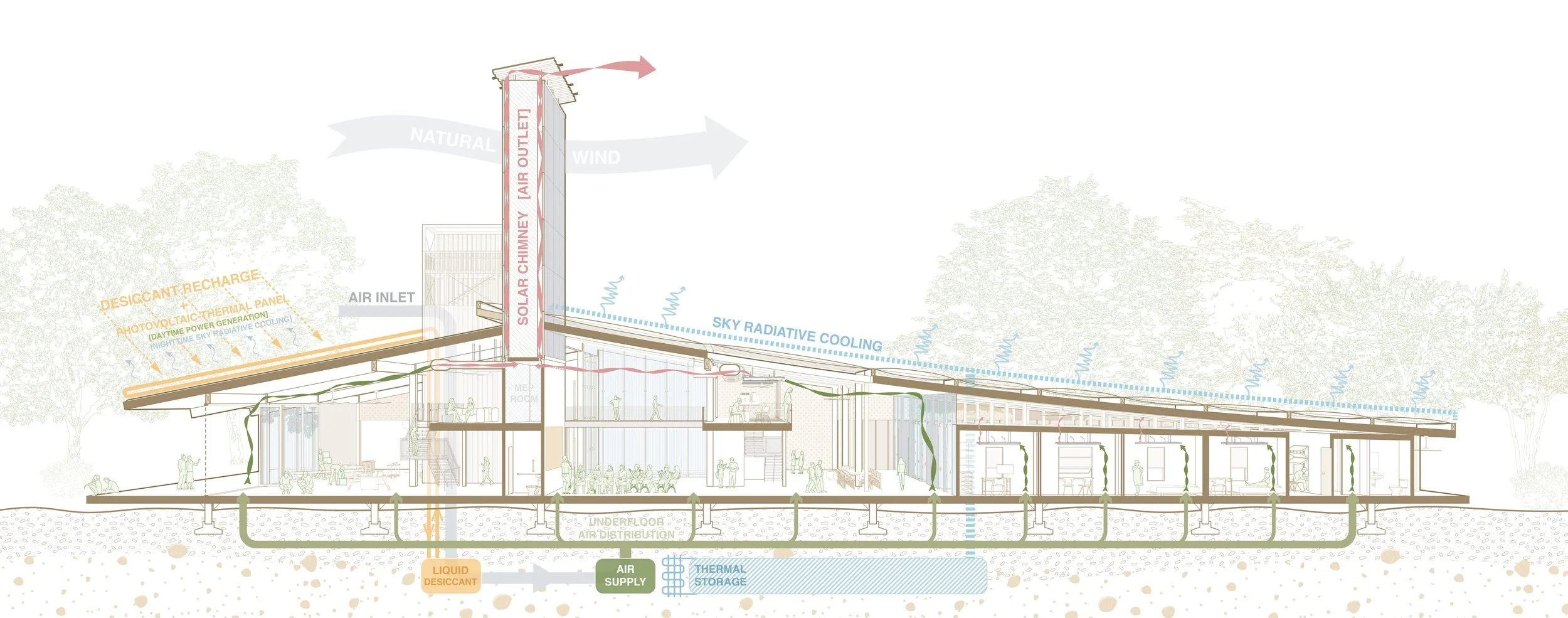A passive conditioning system has been proposed for the project in Woodland, Texas, tailored to meet the region’s specific climate conditions. This system leverages radiative sky cooling, desiccant dehumidification with solar-powered regeneration, and evapo-radiant panels to maximize efficiency. The evapo-radiant panels are designed to optimize evaporative cooling potential, ensuring that more heat are effectively dissipated before the air is exhausted from the system.
The system is seamlessly integrated into the roof structure to maximize exposure to both the sky and the sun, enabling optimal performance of radiative cooling and solar-driven components. This setup is designed to meet the cooling demands even during peak summer conditions. Additionally, a solar chimney is incorporated into the design to enhance displacement ventilation. By creating a natural stack effect, the solar chimney works in harmony with the passive conditioning system, promoting effective airflow and reducing the reliance on mechanical ventilation systems. Together, these integrated strategies provide a sustainable and efficient solution for maintaining indoor thermal comfort.




















